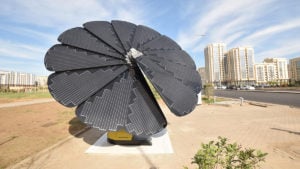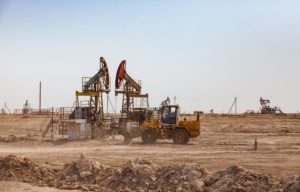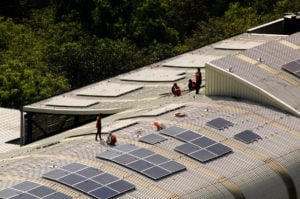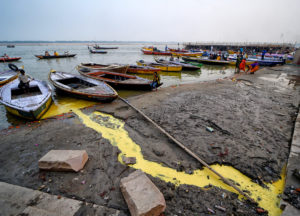Editor’s note: In the first week of January 2022, an increase in the price of liquefied petroleum gas in Kazakhstan triggered nationwide protests. The authorities’ abrupt removal of subsidies led to public unrest and violent disturbances across the country, resulting in the biggest political crisis in decades. Previously, the Kazakh government had subsidised fossil fuel consumption, which reached 3.3% of the country’s GDP, or USD 5.85 billion, in 2011. The recent demonstrations highlight an urgent need to reform Kazakhstan’s energy industry.
In December 2020, during the Climate Ambition Summit, President Kassym-Jomart Tokayev announced Kazakhstan would reach net-zero emissions by 2060. The pledge of a long-term contribution on climate change and the implementation of the Paris Agreement is not unique. Many states have pledged to do the same by 2050 or 2060. What matters now is how countries will reach these targets. Monitoring their progress requires consideration of greenhouse gas emissions in five sectors: energy, industrial processes, waste management, agriculture, and forests and land use. It is impossible to stop emissions in all these sectors at the moment.
Even if all heat and energy production came from renewable sources and electric cars replaced all conventional automobiles, this would only remove greenhouse gas emissions in one sector. It is unrealistic, for example, to expect to eliminate emissions of methane from cows and rice production, nitrous oxide from fertiliser use, greenhouse gas emissions from waste. In any scenario, each country must make it to zero emissions for those sources for which it is possible and offset greenhouse gas emissions when it is unlikely they can be avoided. The second can be done by carbon sequestration, such as expanding forested areas or carbon capture and storage (which involves high upfront costs and investment).
The energy sector can, in theory, reach net zero
Kazakhstan emits 365 million tons of carbon dioxide equivalent annually, approximately 0.6% of the global total. Meanwhile, per capita greenhouse gas emissions are among the highest in the world, and are roughly equal to Australia, Canada and the US.
In September 2021, the Kazakh authorities presented a draft “net-zero carbon emissions by 2060” strategy. This outlines plans to reduce emissions to 230 million tons of CO2 equivalent a year by 2030 and 10 million tons by 2060. Implementing the plan requires total investment of about USD 666.5 billion. The draft strategy has yet to be publicly debated and officially approved. However, it will provide a platform for the public discussion of the country’s long-term climate pledge.
Coal is the source of nearly half of Kazakhstan’s greenhouse gas emissions. The share of renewable energy sources is gradually increasing, but today stands at only 3% of total production. The pace of transition to renewable energy sources lags far behind what is required for the pledged 100% by 2060. A transition to net-zero emissions in Kazakhstan’s energy sector is considered achievable from a technological perspective. Thus, it is necessary to completely switch to renewable sources in the production of heat and electricity, halt the extraction and burning of fossil fuels, and use electric or hydrogen-fuelled transportation. It may take 15-20 years for renewables to be integrated into every household and public parking lot. Similarly, Kazakhstan needs to stop the production, import and sale of petrol or gas-powered automobiles no later than 2045.
Ambition and pathway to net zero in Kazakhstan do not match up
An analysis of the country’s strategies and the narrative in the mass media suggests the government is ill-prepared to implement the transition. The country has a long-term goal for the share of renewable sources to reach 50% by 2050, the final year by which the coal industry is expected to be in operation. This timeframe does not correspond with a goal of achieving net-zero emissions in Kazakhstan by 2060 and should be shifted to an earlier date.
At COP26 in Glasgow in November 2021, many countries adopted a declaration on accelerating the transition to 100% zero-emission cars and vans. This sets a goal for national governments to sell only zero-emissions new cars and vans by 2040. However, along with China, Russia and Uzbekistan, Kazakhstan opted not to join this initiative. Current trends indicate that these developing countries will experience carbon leakage from the developed world through the transfer of its outdated technologies for the production of cars and vans. Therefore, it is doubtful that investments in mass production of such vehicles will be made in Kazakhstan.
The goal of achieving net-zero emissions by 2060 looks more like a manifestation of solidarity with the international community and a promise to strive to be better than we are now
Moreover, many of the Kazakh government’s existing initiatives and plans do not allow net-zero emissions in the energy sector to be achieved by 2060. The planned investment in the incineration of solid municipal waste in the country’s six cities is one example. Annually, up to 5 million tons of solid municipal waste is generated in Kazakhstan; incinerating this will result in the emission of 3.5-6 million tons of CO2. More than 100 million tons of municipal solid waste have accumulated in landfills. If this waste is incinerated, the annual greenhouse gas emissions from the use of waste-to-energy technology may reach 10 million tons annually by 2060, and the bulk of emissions from the waste management sector would go to the energy sector.
Additionally, agricultural and industrial processes release 37 million tons of CO2e and 21.7 million tons in CO2e, respectively. The country’s current economic plan aims to significantly increase production in agriculture and the production of cement and other construction materials, releasing significant greenhouse gas emissions. Therefore, no available technologies will reduce them completely.
The limits of offsetting
The draft of the 2060 net-zero strategy proposes to negate greenhouse gas emissions from agriculture with carbon sequestration in land use and forestry. But in Kazakhstan, land use and forestry is still a source of emissions, contributing 9.6 million tons of CO2 equivalent annually. Other, currently unavoidable, industrial greenhouse gas emissions, such as those from cement, glass, aluminium and steel, are expected to be offset through investments in carbon capture and storage. The lack of detail on these technologies in the strategy leads to the conclusion that this is an attempt to fit the data to the final goal. Large-scale planting of green spaces is an ambitious task for a country facing the impacts of increasing aridity and water scarcity for irrigating crops.
With regard to offsetting emissions through carbon capture and storage, the most optimistic estimates show that it will need to negate tens of millions of tons of CO2 annually. At a cost of USD 70-100 per ton of carbon captured and stored, the desired offset would require billions of dollars annually. In the draft of the “net-zero emissions by 2060” strategy, the necessary carbon capture and storage investments are given at around USD 37.5 billion. The real figure is expected to be much higher, and it is unrealistic that such funds will be invested in Kazakhstan.
This explains why we should not expect the net-zero emissions goal to be completed by 2060. At current rates of progress, the target doesn’t seem on track in the energy sector alone. There are also unavoidable emissions from agriculture, industry and waste, and offsetting those sectors is a challenge even for developed countries. The goal of achieving net-zero emissions by 2060 looks more like a manifestation of solidarity with the international community and a promise to strive to be better than we are now. Therefore, it’s likely to become a game-changer when we purposefully and consistently move towards it and not postpone it for tomorrow.








